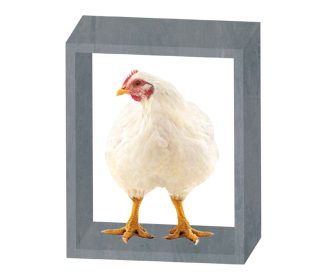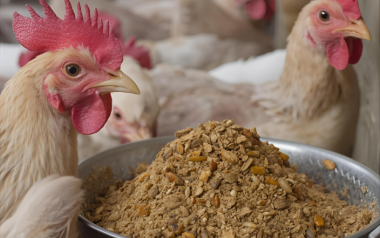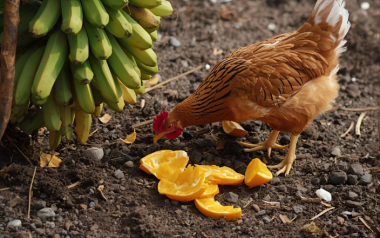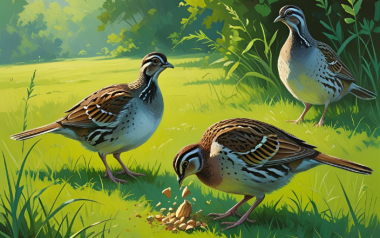Sources: Available upon request
09 Mar 2024
Turmeric and black pepper in layers and broilers feeds
The use of biologically active natural substances as additives, like turmeric and black pepper, in the formulation of diets for laying hens and broilers is currently on the rise. These include phytobiotic plant-based preparations containing chemicals with digestion- and palatability-enhancing properties. These substances are often antioxidant, anti-inflammatory, immunomodulatory and antibacterial.
The use of biologically active natural substances as additives, like turmeric and black pepper, in the formulation of diets for laying hens and broilers is currently on the rise. These include phytobiotic plant-based preparations containing chemicals with digestion- and palatability-enhancing properties. These substances are often antioxidant, anti-inflammatory, immunomodulatory and antibacterial.
Turmeric
Turmeric (Curcuma longo) is a potent dye rich in polyphenols that block one of the metabolic factors that activate inflammation. This plant originating from southeast Asia (India), which contains curcumin, an active product extracted from the rhizomes of turmeric, also contains essential oils that increase the activity of the enzyme’s amylase, trypsin and chymotrypsin, produced in the small intestine and lipase of pancreatic origin. Polyphenolic compounds may reduce the risk of cardiovascular disease and cancer by combating oxidative stress, which ultimately leads to neurodegenerative diseases.
Mechanisms of action
- As an anti-inflammatory, turmeric reduces the saturation of nuclear factor Kappa B (NF-KB), the expression of cyclooxygenase-2 (COX-2) as well as the parainflammatory cytokines interleukins (1L)-1,- 1L-6 and the production of tumor necrosis factor alpha (TNF-2).
- Antioxidant activity is correlated with increased expression of peroxisome proliferator-activated receptor gamma (PPAR-g), modulation of oxidonitrosynthase (ONS) and glutathione.
- Curcumin has been shown to be involved in the regulation of numerous cytokine transcription factors, proteins and kinases, adhesion molecules, redox potential and enzymes that have been linked to inflammation.
The dose is 1 kg. of turmeric per ton of feed. With this concentration, growth promoters can be replaced.
Black pepper
To potentiate the effect of turmeric in poultry diets, black pepper (Piper nigrum) can be added, generating a special synergism since the components of turmeric have little power of intestinal absorption and a strategy is required to improve this situation, through the simultaneous inclusion of the two natural substances. With this mixture the absorption of the turmeric ingredients can be improved by about 2,000 times.
Black pepper is a piperaceae that can be used whole or in powder form as an additive in diets for layers and broilers. Three varieties can be obtained: white, black, and green. These changes are expressed by the degree of maturation of the grain.
Chemical Composition
Pepper contains two chemical alkaloids: one called piperine, which has the particularity of being anti-inflammatory, analgesic and improves digestion. It is used to stimulate the immune response to different microorganisms that attack the respiratory system. It is antiviral, natural anti-flu for excellence and has an anti-parasitic action.
The other alkaloid contained in black pepper is capsaicin, which reduces stress in birds and increases the absorption of selenium, magnesium and phosphorus through the small intestine.
Mechanism of action
Stimulates the production of pancreatic enzymes lipase, amylase, and protease. Simultaneously activates enzymes produced in the intestine lipase, trypsin, and chymotrypsin, acting in synergism with curcumin. Piperine is an antioxidant. The aqueous and ethanolic extract of black pepper has a potent ability to scavenge free radicals.
Conclusions
- Due to the content of antioxidant, immunomodulatory, digestion-enhancing and analgesic substances, turmeric or black pepper (preferably in combination) can be used in diets for laying hens and broilers.
- In layers, it is recommended to use turmeric at a rate of 0.1%, that is 1 kg per ton of feed. In broilers, at a rate of 0.15%, that is 1.5 kilograms per ton of feed.
- Black pepper in layers at a rate of 0.03% to 0.04%, that is 300 to 400 grams per ton of feed. In broilers, at a rate of 0.02% to 0.05%, that is 200 to 500 grams per ton of feed.







































